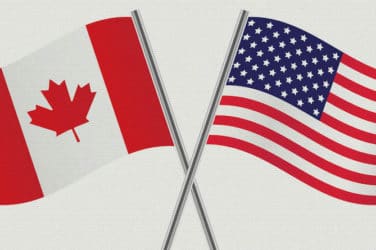
The past decade has been an eventful one for Canadian equity market structure. Trading-venue competition emerged, a potentially transformative cross-border exchange merger was proposed but ultimately scuttled, and long-term growth in trading volume stopped, or at least paused.
Over the next 10 years, market participants and observers will be closely watching for volumes to rebound and assessing the impact of technology and regulation, all while gauging Toronto’s long-term viability as a capital markets center.
Back in 2007, the Toronto Stock Exchange was pretty much the only game in town, with a stranglehold market share near 99%. But change was in the air, as newly formed Alpha Group launched an alternative trading system in 2008 and ramped up to about 20% of Canadian volume within a few years.

Thomas Kalafatis
“(TSX) competitors weren’t credible until Alpha, which was sponsored by the big six Canadian banks, came to the fore,” said Thomas Kalafatis, who in 2007 was a vice president in sales and trading for TSX Markets, spoke on the first panel. “Our challenge was trying to to deal with that competition and manage for that.”
Kalafatis, now a managing partner at Independent Trading Group Inc., noted that Alpha delivered on its promise of expanding trading in Canada — at least until a broader market evolution changed the equation.
“They got it right in that there would be a new participant,” Kalafatis said. “What they didn’t see was that they would lose their primacy around making markets because the quote for small-size orders is now done quantitatively.”
Alpha was folded into TMX in 2012, after Maple Group, a consortium of Canadian banks and pension funds, acquired TMX, derailing London Stock Exchange’s bid for the Canadian exchange operator. The failed LSE bid was a missed opportunity, said Thomas Caldwell, chairman of Caldwell Securities and a long-time investor in the exchange space.

Tom Caldwell
“LSE acquiring TMX would have opened the London quote machines to Canadian companies,” Caldwell said. “Whether they could trade directly on it didn’t matter. At least you would have exposure in European and Middle East markets via the London quote machine. I thought that would be quite a positive for Canada by opening up new sources of capital.”
“The banks in Canada didn’t want that, so they cobbled together a group and wrapped themselves in the flag,” Caldwell continued. “They were successful at that, which has been unfortunate in that it preserved the banks’ positions as leaders in the investment business, but it turned away a new source of capital for Canadian enterprises, which was needed and is still needed.”
Over the next 10 years, Caldwell expects technology to effect change in the securities space; for example, blockchain has the potential to drive efficiencies in trading and clearing. Another trend he sees is a cooling-down in exchange-traded funds, and renewed interest in active investing via the selection of individual securities.
Flat volume is a major concern going forward, and it feeds into existential questions, Kalafatis noted.
“Volume used to grow in Canada like clockwork, between 4% and 7% every year,” Kalafatis said. From 1977 to 2012, it grew every single year except for one year” when Nortel Networks filed for bankruptcy.
“So you had this explosion of volume and new participants. And I think the assumption 10 years ago was that new participants was going to trade via the banks and volume would keep growing,” Kalafatis said. “But volume has declined. And there’s more variance to the volume, which has made the market more unpredictable.”
As talk of exchange consolidation continues, Kalafatis cited the biggest threats to Canadian equity markets as trades being sent south to be executed in the U.S.; trades being internalized, i.e. executed in-house at brokerage firms rather than on lit exchanges; and regulatory overreach.
“Canadians assume that the Toronto market will be here in 10 years,” Kalafatis said. “But people need to recognize that having a capital market is not sacrosanct. You can ask people in San Francisco, Philadelphia, Cincinnati, Winnipeg, Calgary, Vancouver, Montreal, who in the last 25 years all lost their equity market.”




